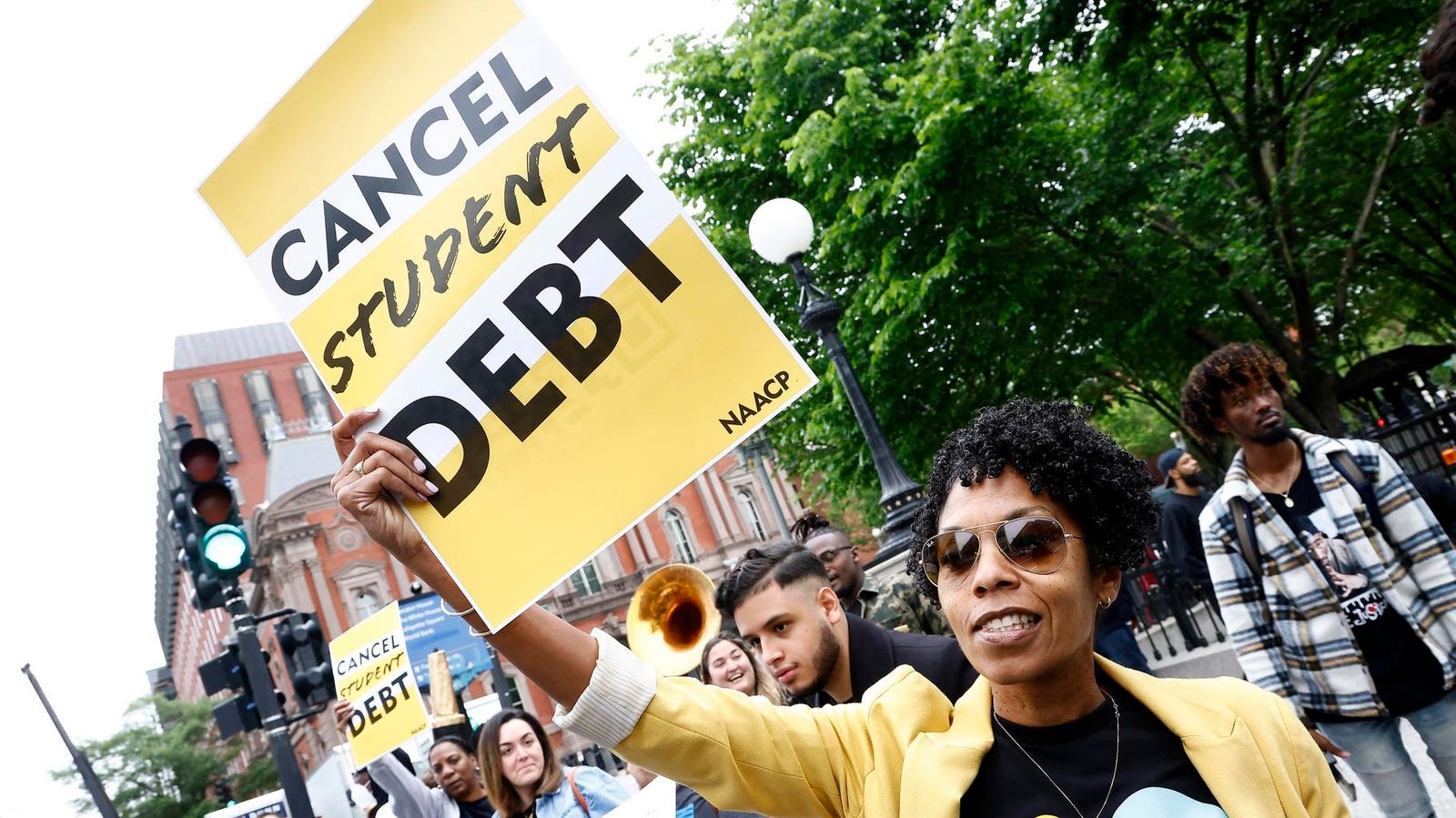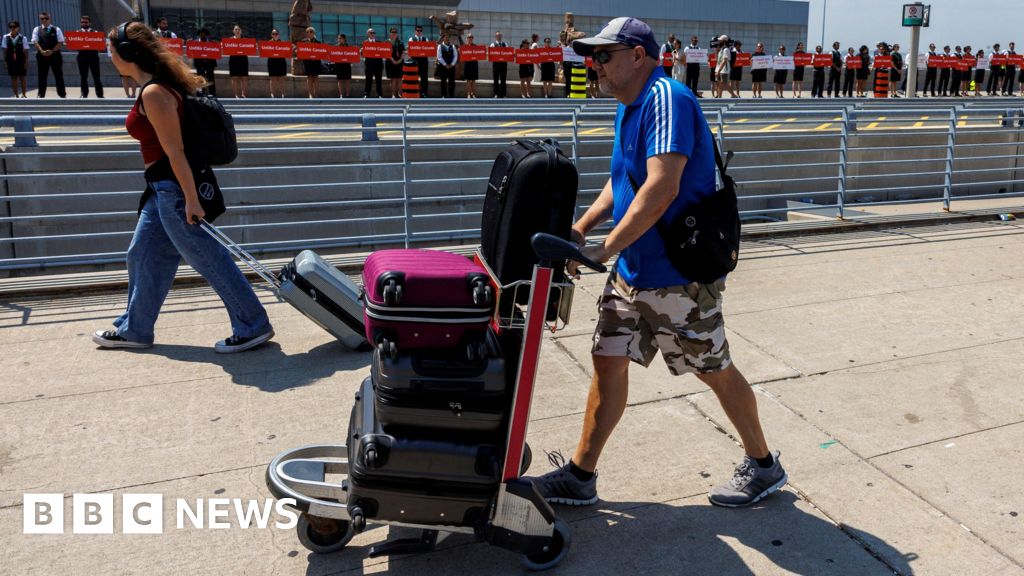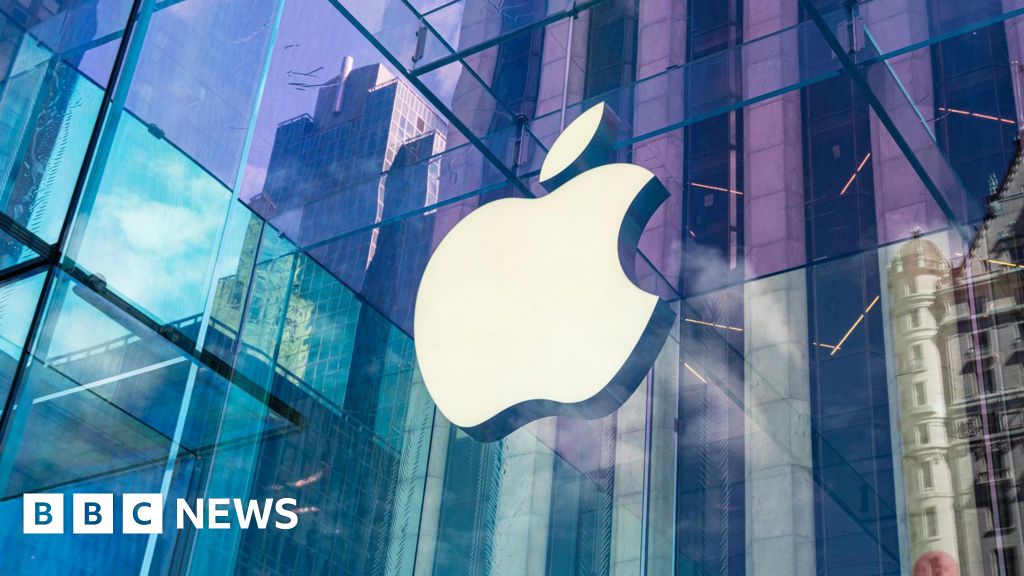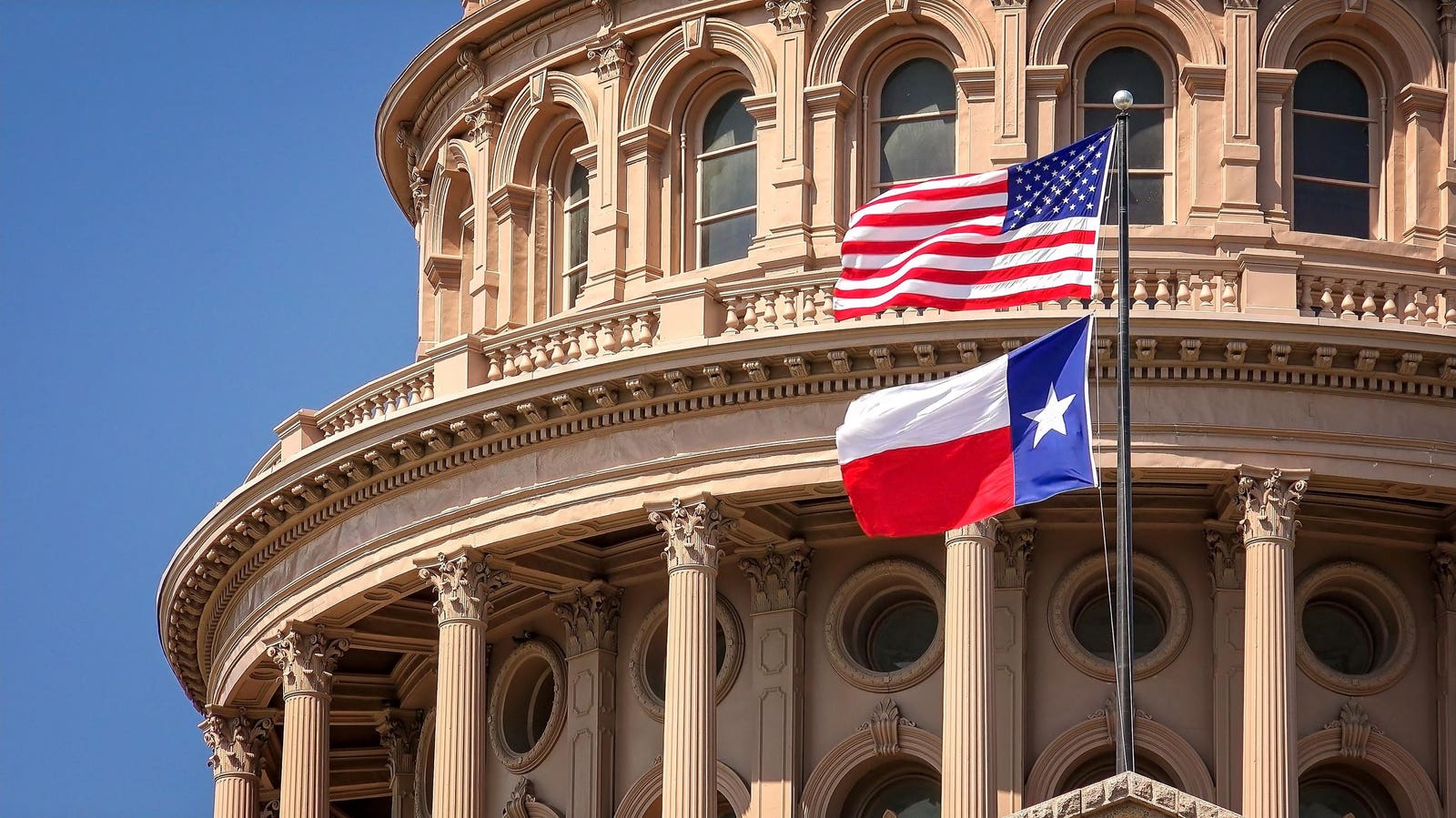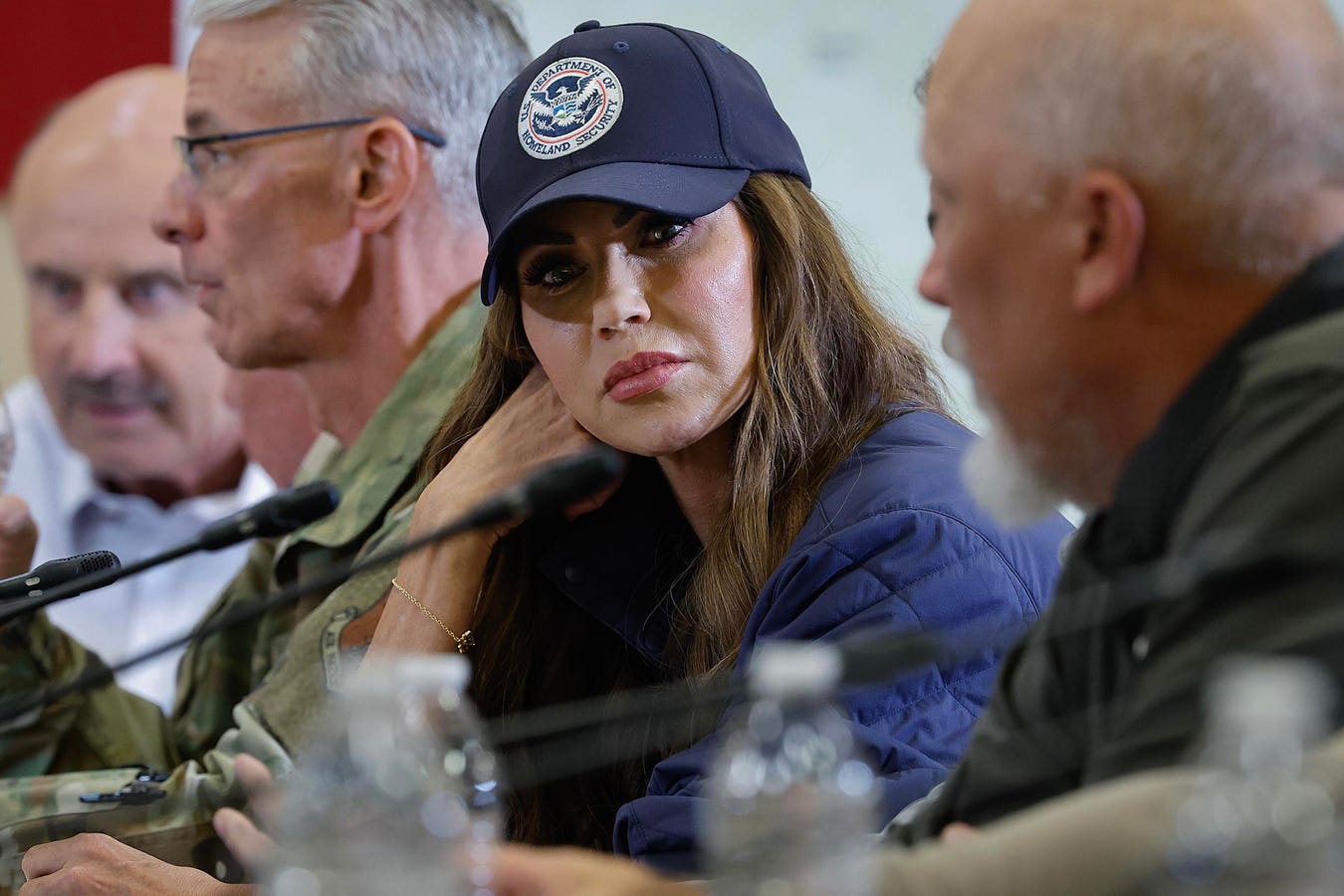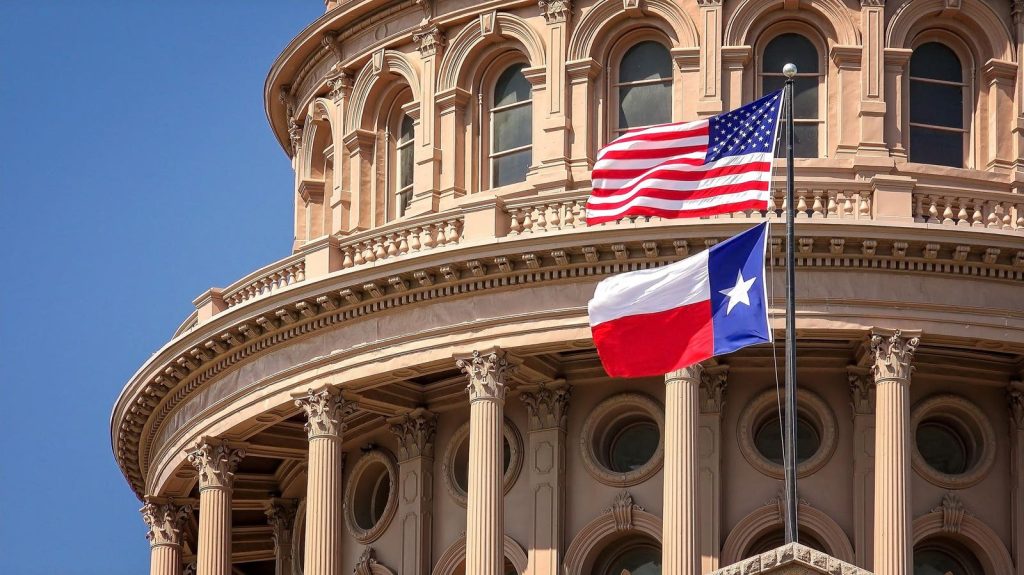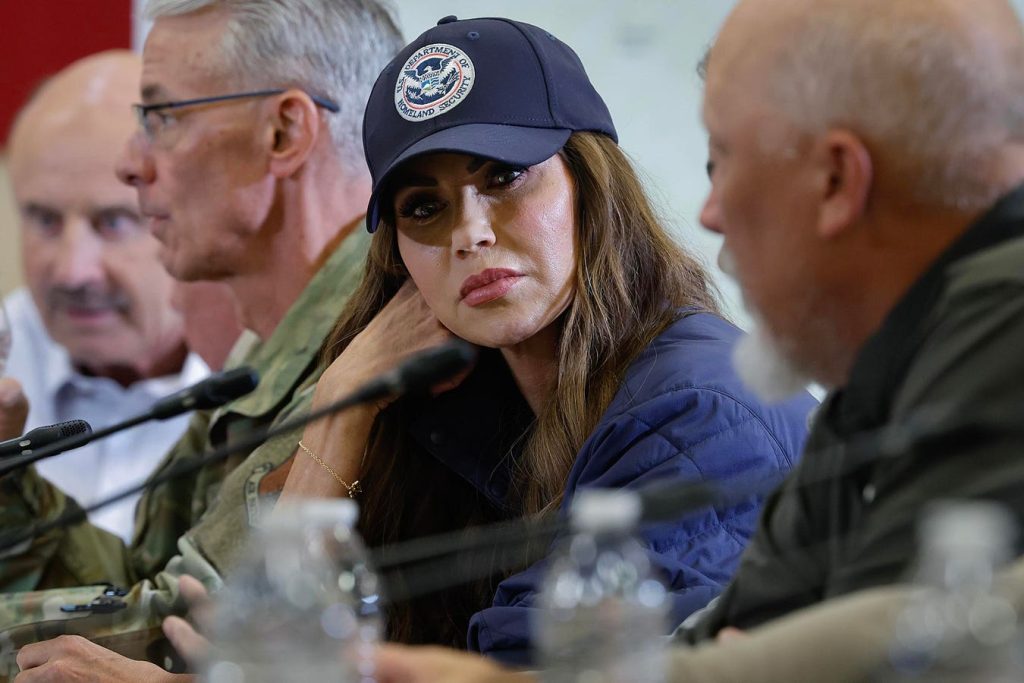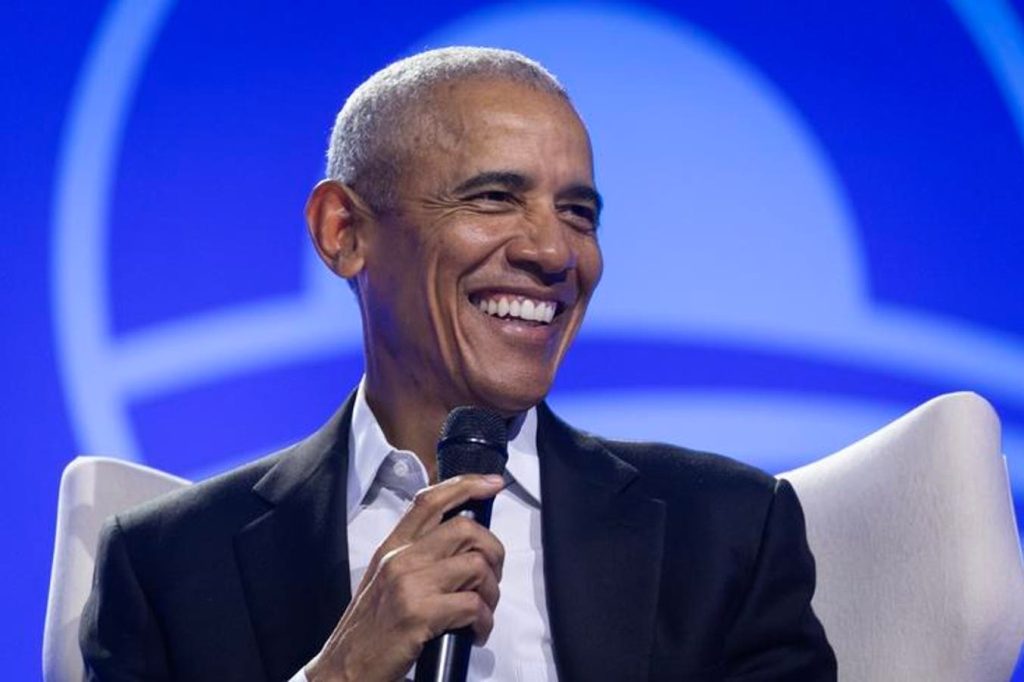Topline
The Trump administration published proposed regulations this week that seek to limit which public service employees can have their student loans forgiven, one of several ways the Trump administration has taken steps in recent months to restrict loan forgiveness after the Biden administration significantly expanded it.
Student loan borrowers gather near The White House on May 12, 2020 in Washington, DC.
Getty Images for We, The 45 Million
Key Facts
The Education Department published new rules in the Federal Register on Monday that restrict employers from participating in Public Service Loan Forgiveness (PSLF) if they’re engaged in “illegal activities,” after President Donald Trump signed an executive order targeting the forgiveness program in March.
The regulations propose disqualifying employers that would otherwise qualify for PSLF on the basis of things like promoting gender-affirming care for minors or committing “violence for the purpose of obstructing or influencing government policy,” raising concerns among critics that it will be used against Democratic-leaning organizations, governments in “sanctuary cities” or groups that otherwise promote left-leaning policies.
Borrowers eligible for student loan forgiveness under Income-Based Repayment (IBR) plans are also now in limbo after the Trump administration paused forgiveness under that program earlier this summer, a change that it has said is temporary.
Student loan forgiveness under multiple other repayment plans had already been on hold due to court orders—including under the Saving On A Valuable Education (SAVE), Pay As You Earn (PAYE) and Income-Contingent Repayment (ICR) plans—but Democrats have questioned the necessity of pausing IBR forgiveness, given that it’s not affected by the court rulings directly.
The reconciliation bill Trump signed into law in July, known as his “Big Beautiful Bill,” also makes some changes to student loan forgiveness as part of its broader overhaul of how student loans are allocated and repaid.
What Changes Could Be Made To Public Service Loan Forgiveness?
The rules published Monday in the Federal Register disqualify employers who are otherwise eligible for PSLF from participating in the program anymore if the administration determines their activities have a “substantial illegal purpose.” PSLF allows borrowers to have their loans forgiven faster if they work in public service occupations, which includes private nonprofits as well as the government or other public institutions. The specific categories of “illegal” activities that the federal rules specify are “aiding and abetting” offenses against the U.S.; “chemical and surgical mutilation” of minors, specifically in states with laws banning gender-affirming care for minors; being or supporting a “foreign terrorist organization”; committing “illegal discrimination”; violating federal immigration laws; “trafficking” minors for the purpose of emancipating them from their guardians and “violence for the purpose of obstructing or influencing federal policy.” The broad nature of those definitions has sparked concern that they could be used to punish Democratic-leaning organizations that focus on topics like transgender rights or supporting undocumented immigrants. The Institute for College Access and Success suggested the White House could also deny forgiveness to government employees working for any “sanctuary” cities or states that don’t cooperate with federal immigration authorities, or universities the Trump administration has previously targeted for partnering with diversity initiatives. The rules would give the secretary of education, a Trump appointee, broad discretion to determine which employers are acting “illegally” and should be disqualified from PSLF.
How Would The Changes Impact Borrowers?
The changes to PSLF have not been finalized yet, with the publication in the Federal Register on Monday kicking off a 30-day public comment period through Sept. 17, in which members of the public can submit thoughts on the new policy. If the policy goes through, it will take effect starting July 1, 2026, and the education secretary could broadly either disqualify existing employers who participate in PSLF, or determine any new organizations that apply for the program aren’t eligible because of their purportedly “illegal” activities. Employers can challenge their disqualification and be let back into the program if the education secretary approves a “corrective action plan” that puts them in line with the federal policy, and employers can also be eligible to rejoin the PSLF program 10 years after the secretary disqualified them. The rules do not give borrowers working for the employer any recourse to challenge them being cut off from PSLF if their workplace is disqualified, however, meaning that employees would have to find another job with a different employer eligible for PSLF in order to keep working toward loan forgiveness under the program. The rules will apply to any student loan payments made after July 1, 2026, so borrowers working for disqualified employers will not have any of their payments counted toward loan forgiveness if they’re made after that date. The new rules are likely to face legal challenges, however, so it’s possible the changes could be blocked in court temporarily or permanently.
When Will Income-Based Repayment Forgiveness Resume?
The Trump administration noted in late July that loan forgiveness under IBR had been temporarily halted, after borrowers had already reported forgiveness under the plan being delayed, and it’s unclear when it will resume. IBR plans are one of a few different kinds of payment plans that are based on a borrower’s income, and is the main one that was not affected by a court ruling that broadly halted other income-driven plans set up under the Biden administration. Ellen Keast, deputy press secretary at the Education Department, told Forbes in a statement Wednesday that forgiveness had been paused because a court ruling impacting other student loan repayment plans affects how loan forgiveness amounts are calculated under IBR, and “IBR discharges will resume as soon as the Department is able to establish the correct payment count.” Sen. Bernie Sanders, I-Vt., and Democratic senators sent a letter to Education Secretary Linda McMahon on Monday asking for more information about the pause, arguing the Trump administration’s failure to to provide a clear timetable about how long it will last is “alarming considering many borrowers have already been waiting months for relief.” Keast told Forbes that borrowers who become eligible for forgiveness while the program is on pause and keep making payments will have any overpayments refunded.
Other Student Loan Forgiveness—including Save, Paye And Icr Plans—also On Hold
The Trump administration’s decision to halt IBR comes as borrowers have already been denied forgiveness under the SAVE, PAYE and ICR plans, after a federal court ruled in February against the SAVE Plan and also blocked forgiveness through those other income-centric repayment plans. That litigation is still moving forward in court, so it’s possible there could be more changes on the program’s status in the future. Also tied up in court is forgiveness under programs that allow borrowers to have their loans discharged if their school closed or defrauded them. The Supreme Court will hear that case during its upcoming term and issue a decision by June 2026, but the Education Department is not processing applications for forgiveness in the meantime.
How Does Trump’s ‘big Beautiful Bill’ Impact Student Loan Forgiveness?
The spending bill broadly overhauled the student loan repayment process, getting rid of existing payment plans based on income and forcing new borrowers to choose between either a set repayment plan that evenly divides the loan into monthly installments, or a single “Repayment Assistance Plan” (RAP) that calculates payments based on the borrower’s income. Borrowers who enroll in RAP will face a different threshold for forgiveness than borrowers under existing plans, as the law says RAP borrowers must make 30 years of student loan payments before their remaining loans are forgiven, up from 20 or 25 years under current plans. (Faster loan forgiveness under PSLF, which forgives loans after 10 years of payments, will still be available.)
Who Is Still Eligible For Loan Forgiveness?
Borrowers are still generally able to get loan forgiveness through ICR plans—whenever that resumes—and through PSLF, though court filings suggest there’s a substantial backlog of applications the Education Department is trying to work through. Borrowers can also submit applications for forgiveness if their schools closed or defrauded them, but the applications will not be processed unless the Supreme Court upholds the programs as they now stand. If the court rules against the Education Department, which is arguing the rules should remain in place, borrowers would only be able to use their school defrauding them as a defense if they default on their loans, rather than to proactively seek forgiveness. Other loan forgiveness programs that so far remain intact are those for teachers, people with total and permanent disabilities, members of the military and some people who complete AmeriCorps programs.
Key Background
Student loan forgiveness has emerged as a major political debate in recent years, as Democrats like Sen. Elizabeth Warren, D-Mass., have pushed for broad debt relief and made it a key campaign issue. While former President Joe Biden did not go as far as some on the left wanted in backing total student loan relief, his White House undertook a number of efforts to relieve borrowers’ debt, including more piecemeal measures that targeted specific groups and a broader plan for loan forgiveness for tens of millions that the Supreme Court ultimately struck down. Republicans have heavily protested the forgiveness plans and challenged Biden’s programs in court, leading to many of the court rulings that have now put forgiveness programs on hold. The Trump administration has also vowed to curb the government’s spending on student loan forgiveness, with McMahon saying in April that “American taxpayers will no longer be forced to serve as collateral for irresponsible student loan policies.”
Further Reading
ForbesHow Trump’s Spending Bill Will Impact Your Student Loans—As It Heads To President For SignatureBy Alison DurkeeForbesDepartment Of Education Suspends Student Loan Forgiveness Under IBRBy Adam S. MinskyForbesDepartment Of Education Publishes New Rules Restricting Student Loan Forgiveness For PSLFBy Adam S. Minsky

